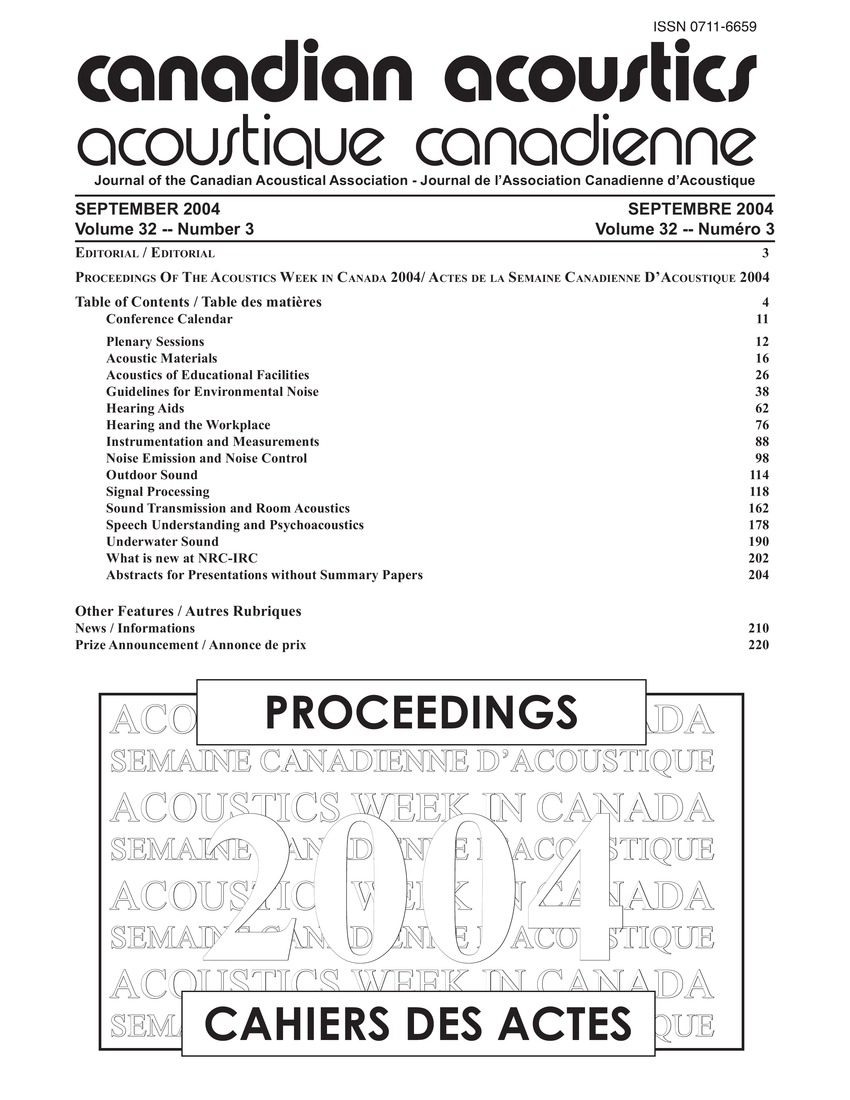How urban hum became the noise limit in ontario
Keywords:
Environmental impact, Job analysis, Laws and legislation, Municipal engineering, Traffic control, Urban planning, Community reaction, Sound level, Traffic noise, Urban humAbstract
Since 1978 MOE has used the equivalent sound level of urban hum, that amalgam of distant traffic and other sounds which forms the background noise in most urban and suburban areas, as the primary limit for assessing the noise impact from industry and other sound sources. This means that the limit to be used at a specific location is based on the sound actually received at that location, rather than an arbitrary number. This has made sense to industry, residents and consultants, who have used this limit for over 25 years. It has also been used in a Federal-Provincial guideline and many practical limits are found to be based indirectly on urban hum. In this paper, the origins of this limit are explored and some of the issues which were examined at that time and later are discussed. How urban hum behaves, how widespread it is and how it is used as a limit are also reviewed.Additional Files
Published
How to Cite
Issue
Section
License
Author Licensing Addendum
This Licensing Addendum ("Addendum") is entered into between the undersigned Author(s) and Canadian Acoustics journal published by the Canadian Acoustical Association (hereinafter referred to as the "Publisher"). The Author(s) and the Publisher agree as follows:
-
Retained Rights: The Author(s) retain(s) the following rights:
- The right to reproduce, distribute, and publicly display the Work on the Author's personal website or the website of the Author's institution.
- The right to use the Work in the Author's teaching activities and presentations.
- The right to include the Work in a compilation for the Author's personal use, not for sale.
-
Grant of License: The Author(s) grant(s) to the Publisher a worldwide exclusive license to publish, reproduce, distribute, and display the Work in Canadian Acoustics and any other formats and media deemed appropriate by the Publisher.
-
Attribution: The Publisher agrees to include proper attribution to the Author(s) in all publications and reproductions of the Work.
-
No Conflict: This Addendum is intended to be in harmony with, and not in conflict with, the terms and conditions of the original agreement entered into between the Author(s) and the Publisher.
-
Copyright Clause: Copyright on articles is held by the Author(s). The corresponding Author has the right to grant on behalf of all Authors and does grant on behalf of all Authors, a worldwide exclusive license to the Publisher and its licensees in perpetuity, in all forms, formats, and media (whether known now or created in the future), including but not limited to the rights to publish, reproduce, distribute, display, store, translate, create adaptations, reprints, include within collections, and create summaries, extracts, and/or abstracts of the Contribution.


